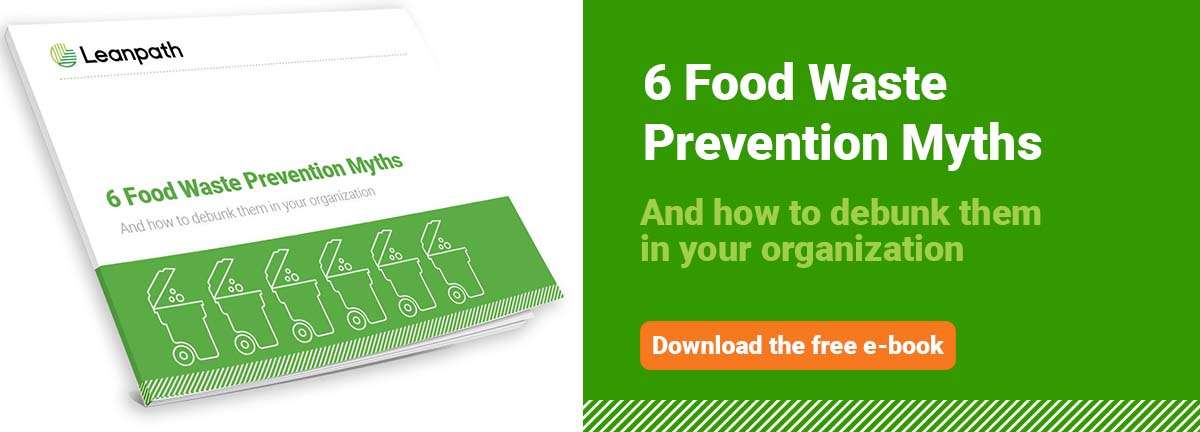Food waste prevention myth #1: My team doesn’t have time to track and prevent food waste
![]()
Food waste prevention–the only way to address food waste that delivers triple-bottom-line benefits–requires new kitchen tools and workflows. For busy kitchens with thin margins, this rightly brings up questions – and can lead to misconceptions.
One of the biggest myths about food waste prevention is that it takes too long. In fact, food waste tracking and the prevention it enables not only saves money, it saves time, making kitchen teams more efficient.
Let’s dig a little deeper into this myth and get a better idea of the actual ROI on food waste tracking.
Why this myth exists
To prevent food waste, a kitchen must first track the waste it is currently producing. Equipped with data from that tracking on what is being wasted and why, kitchens can make smart adjustments to purchasing and prep to stop wasting that food going forward.
Kitchens are busy places and often struggle to stay fully staffed. Every minute of labor is precious. So when a kitchen hears food waste prevention requires adding a new workflow, they don’t always stick around to hear that that labor investment is paid back by making staff more efficient (and by cutting the amount of food needed to purchase and prep).
For every hour invested in tracking food waste, an average Leanpath site saves $811 USD.
Debunking this myth
The time invested in tracking is paid back in a more efficient team and lower costs.
By far the largest source of food waste in foodservice kitchens is overproduction; Leanpath data shows it typically makes up 50 percent or more of a kitchen’s food waste stream. When you stop producing food that just goes to waste, you stop investing in the time spent purchasing, inventorying, prepping, cooking, and ultimately discarding that food. (Ask yourself: my kitchen staff has time to prepare food that only goes to waste, but not time to track and prevent it?) Based on Leanpath analysis, the labor saved by cutting food waste from overproduction in half could increase a kitchen’s profitability by 4 percent to 8 percent.
For every hour invested in tracking food waste, an average Leanpath site saves $811 USD.
In addition to the financial savings from food waste tracking, the daily practice of measurement also transforms kitchen culture, raising awareness and increasing efficiency.
Understand the true value of food waste prevention in our new, free e-book:
Sign up for our monthly newsletter for the latest in
food waste prevention initiatives, best practices, webinars and more.
